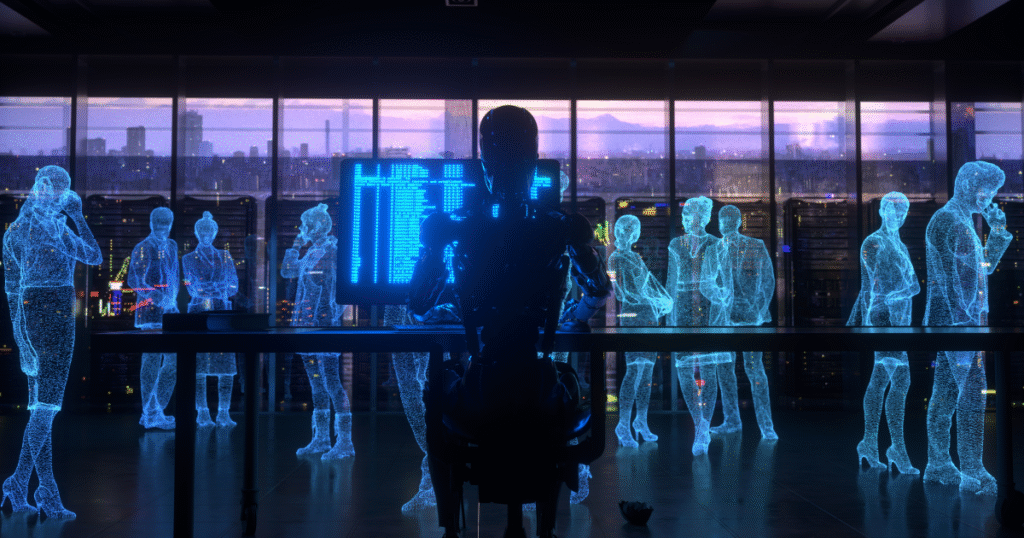Agentic AI is emerging as one of the most transformative ideas in technology today. Unlike earlier applications of artificial intelligence, which focused on incremental efficiencies, it creates entirely new ways of working. It doesn’t just make processes faster, it rewires organizations and unlocks new economic models. On the other hand, for leaders, this is not simply a technology shift, but a fundamental redesign of how organizations operate.
TL;DR
Agentic AI is more than efficiency. It chains tasks together, operationalizes data, and powers autonomous systems that reshape industries. Leaders must prepare by embracing simulation, synthetic data, and new architectures that unlock both safety and scalability.
Agentic AI and the Shift Beyond Efficiency
Much of today’s AI conversation revolves around cost reduction and productivity gains. But agentic AI represents a deeper shift. It creates autonomy, chaining together sequences of tasks that go far beyond dashboards or single-point automations. Self-driving cars are a clear example. Each ride is not one task, but an orchestrated series of decisions, powered by agentic intelligence.
As Harvard Business Review highlights, adopting AI responsibly requires moving past short-term productivity metrics to evaluate how it transforms long-term company values. Agentic AI represents that next step.
AI and Data as a Living System
In the past, digitization gave companies dashboards that showed what was happening. Today, AI needs a steady flow of data it can read and act on. Agentic AI works best when it has real-time information from people and organizations, allowing it to make decisions on the fly. This is the big shift from looking at reports after the fact to building systems that can act on their own in the moment.
The World Economic Forum notes that building trust in AI systems requires transparency, continuous monitoring, and adaptive design. These same principles are what make agentic architectures viable.
Autonomy Through Simulation
Two ingredients enable safe and scalable autonomy: simulation and synthetic data. Before an autonomous system touches the real world, it must be trained on billions of virtual interactions. Agentic AI systems rely on this training to reduce risk, anticipate edge cases, and build resilience.
As MIT Technology Review reports, synthetic data is rapidly becoming a cornerstone for training advanced AI, ensuring both breadth and depth of experience without real-world consequences.
Agentic AI and Organizational Redesign
Agentic AI does not help with outdated processes. Instead, it enables leaders to design entirely new architectures. These architectures are not built around old hierarchies but around autonomous flows of data and decisions. The payoff is not just better KPIs, but new business models altogether.
As The Economist observes, generative and agentic AI are already reshaping workflows, with profound implications for how organizations structure tasks and roles. Businesses that embrace these shifts early will be positioned for durable advantage.
The Next Frontier
The future of AI is not simply about automating processes. It is about systems that can act, learn, and adapt in ways that resemble human-like agency. Agentic AI brings this vision closer to reality, creating the conditions for resilience, adaptability, and entirely new categories of innovation.
FAQs
What is agentic AI?
Agentic AI refers to artificial intelligence systems capable of chaining tasks and making autonomous decisions that extend beyond single-point automation.
How is it different from traditional AI?
Traditional AI focuses on efficiency and single-task automation. Agentic AI enables autonomous processes with many steps, that reshape entire ways of working.
Why are simulation and synthetic data important?
They allow AI systems to be trained safely at scale, preparing them for complex real-world scenarios without high risk.
How will agentic AI change business?
It will shift organizations from optimizing old processes to building entirely new models that combine autonomy, adaptability, and innovation.
Are companies already using agentic AI today?
Yes. Examples include autonomous vehicles, digital twins in logistics, and enterprise platforms connecting multiple tasks into automated workflows.
Conclusion on Agentic AI
Agentic AI represents a decisive step forward in artificial intelligence. By chaining tasks, feeding on living data systems, and relying on simulation and synthetic training, it enables organizations to design entirely new ways of working. The organizations that succeed in the next decade will be those that see AI not as a tool for efficiency, but as a partner in reshaping the very architecture of business.
Related content you might also like:
- Welcome to Agentic Retail: Walmart’s Sparky Redefines the Ecommerce Experience
- The Ethics of Autonomy
- AI: Feature versus Architecture
- Work Is Changing: Can You Lead Machines as Well as People?
- The 360 degree solution


